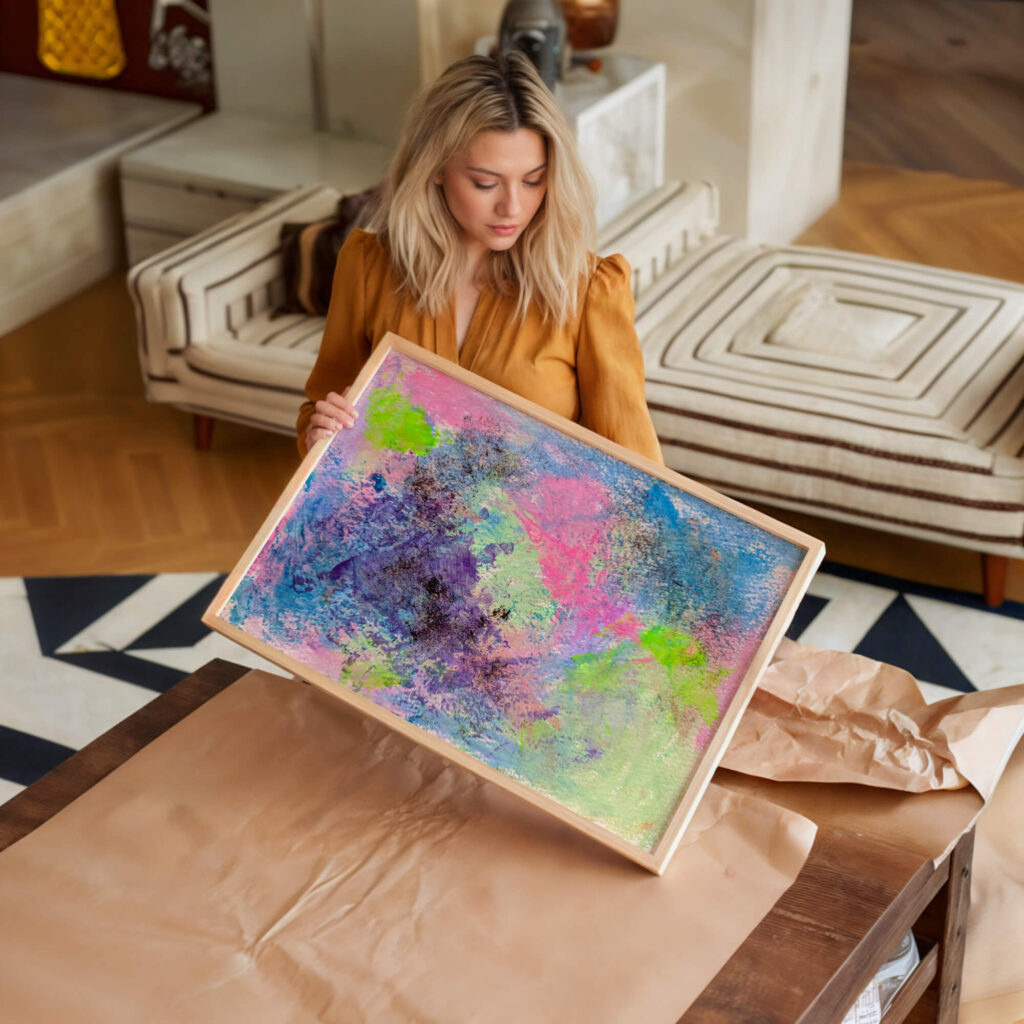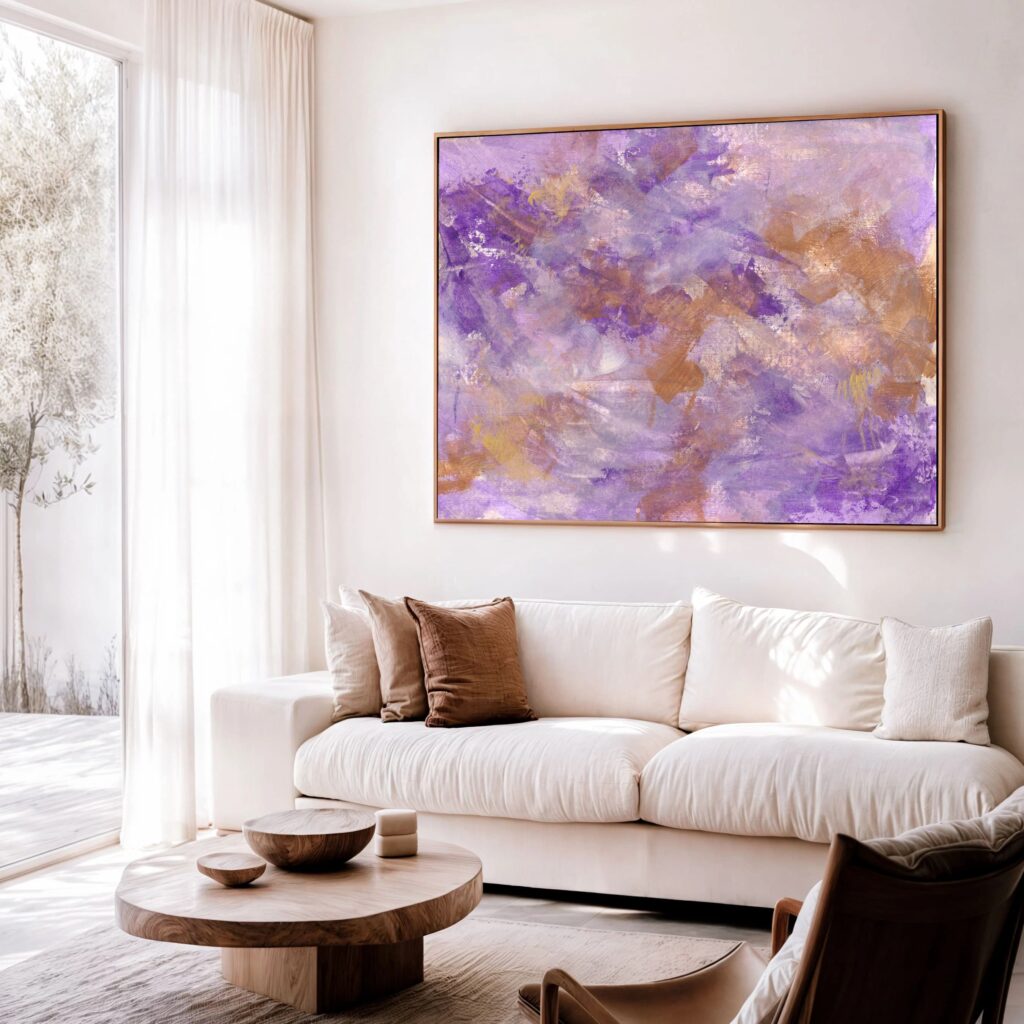The Emotional Language of Abstract Art
Abstract art isn’t supposed to explain. It’s supposed to hold.
That’s why emotionally intelligent collectors choose it, not because it’s trendy, or loud, or curated to match the rug, but because it speaks a language most of the world has forgotten how to hear. Abstract art doesn’t narrate. It resonates. It creates space for what is felt, but not yet named. And when placed with intention, it becomes more than décor. It becomes anchoring. A private sanctuary on the wall.
This isn’t a metaphor. It’s presence.
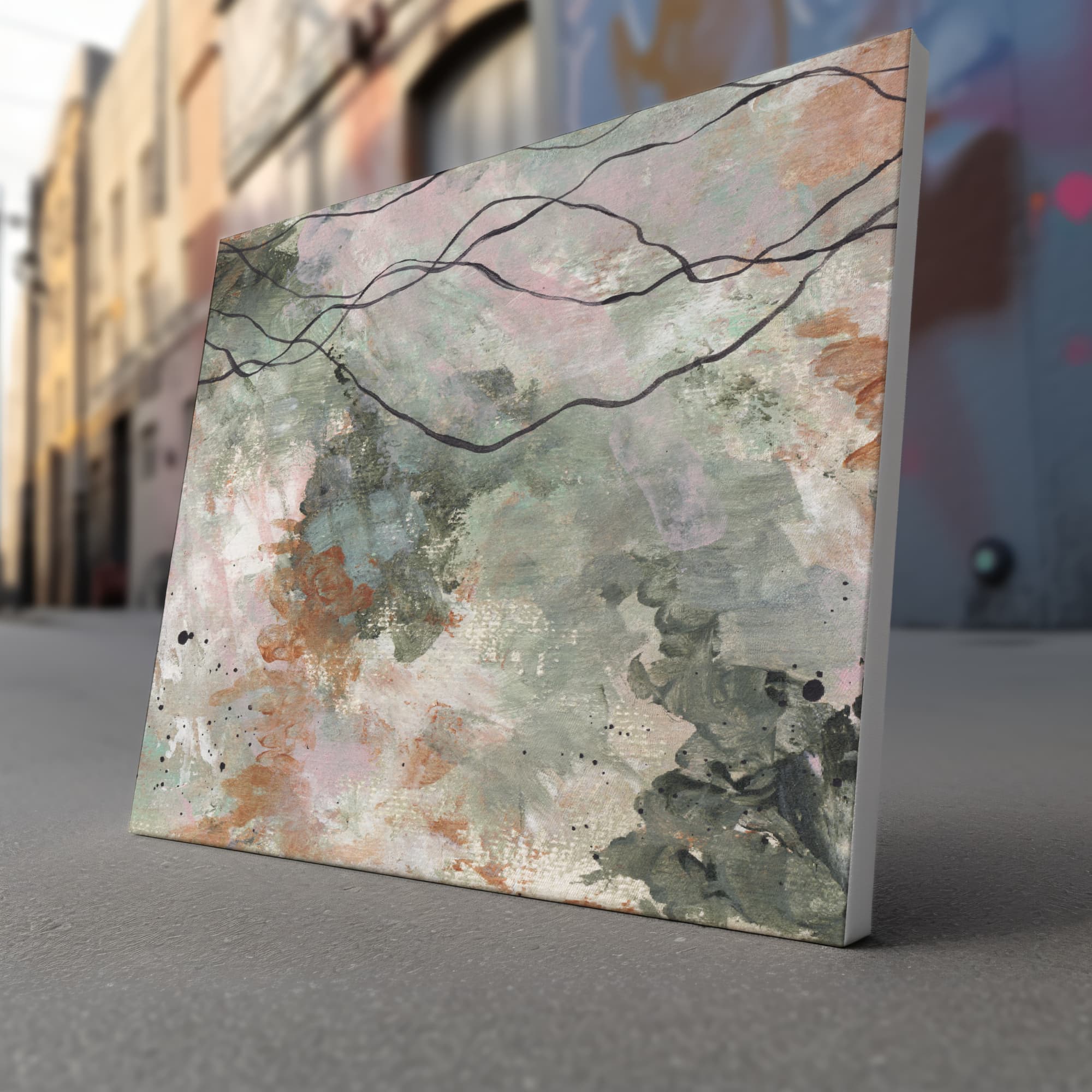
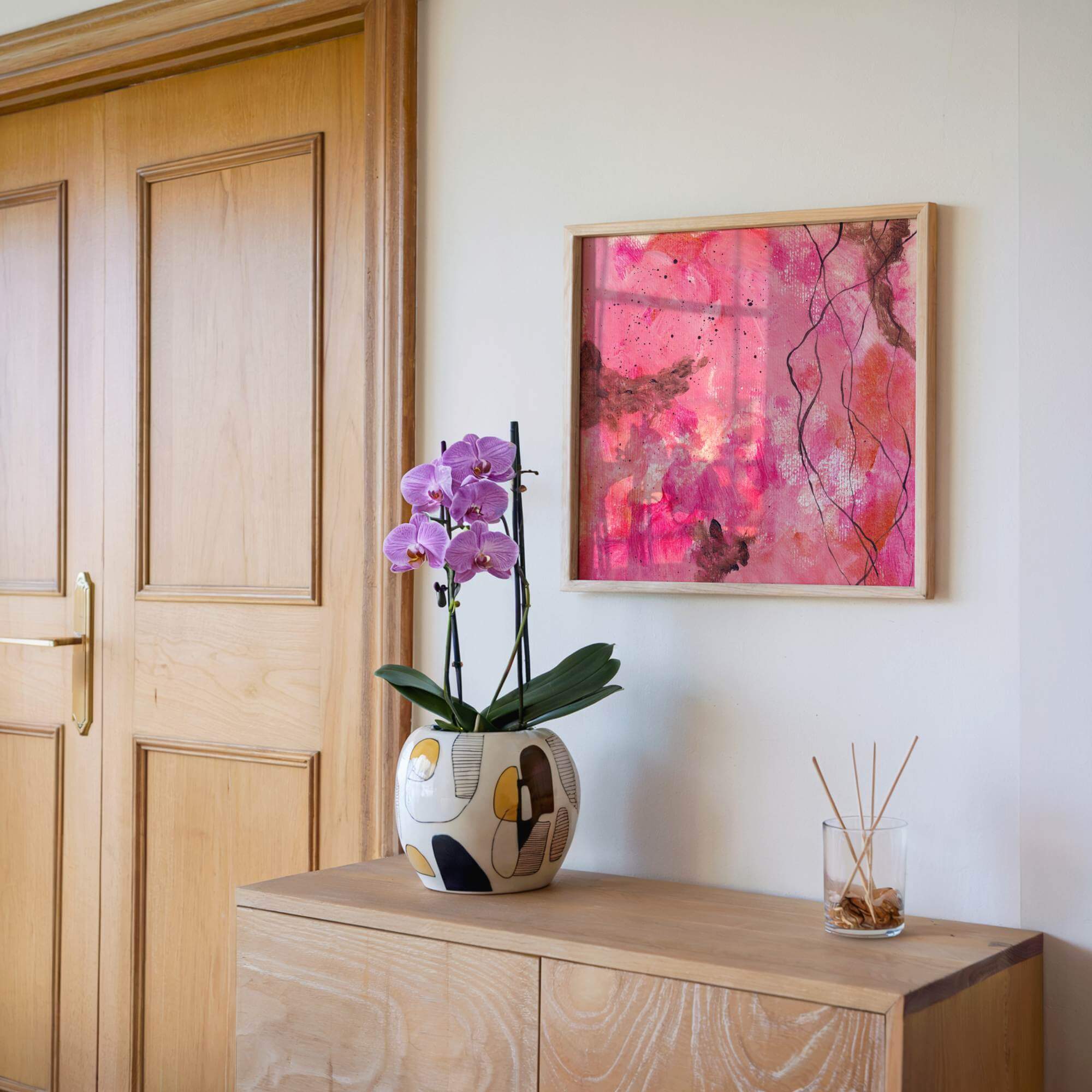
Why Emotionally Intelligent Art Matters
We live in a world where visibility is loud. Everything has to sell, to shout, to trend. But abstract art holds its power in the opposite direction. It doesn’t perform. It doesn’t explain itself. It gives you room to exhale.
When I work with collectors, especially through Soul on Canvas, my private commission experience, we don’t start by talking about colour palettes or furniture schemes. We begin with silence. The kind that speaks before words do. Because the best art doesn’t match a home. It meets a moment.
Collectors who choose this path aren’t buying a painting. They’re making space for what they carry.
Abstract Art as Emotional Anchoring
We’re overstimulated by aesthetics. Curated feeds. Fast design. Endless trends. But few ask: How do I want to feel in this space? That’s where emotional abstract art comes in.
Collectors I work with are not buying to fill a wall. They’re commissioning calm. They’re creating focus. They’re making space that doesn’t demand attention but welcomes arrival. Especially in:
-
- Home sanctuaries (bedrooms, meditation rooms, quiet corridors)
- Executive offices (especially for those leading in high-pressure sectors)
- Private retreats or wellness environments
The right piece can shift the atmosphere of a room. Not by being loud. But by being grounded.
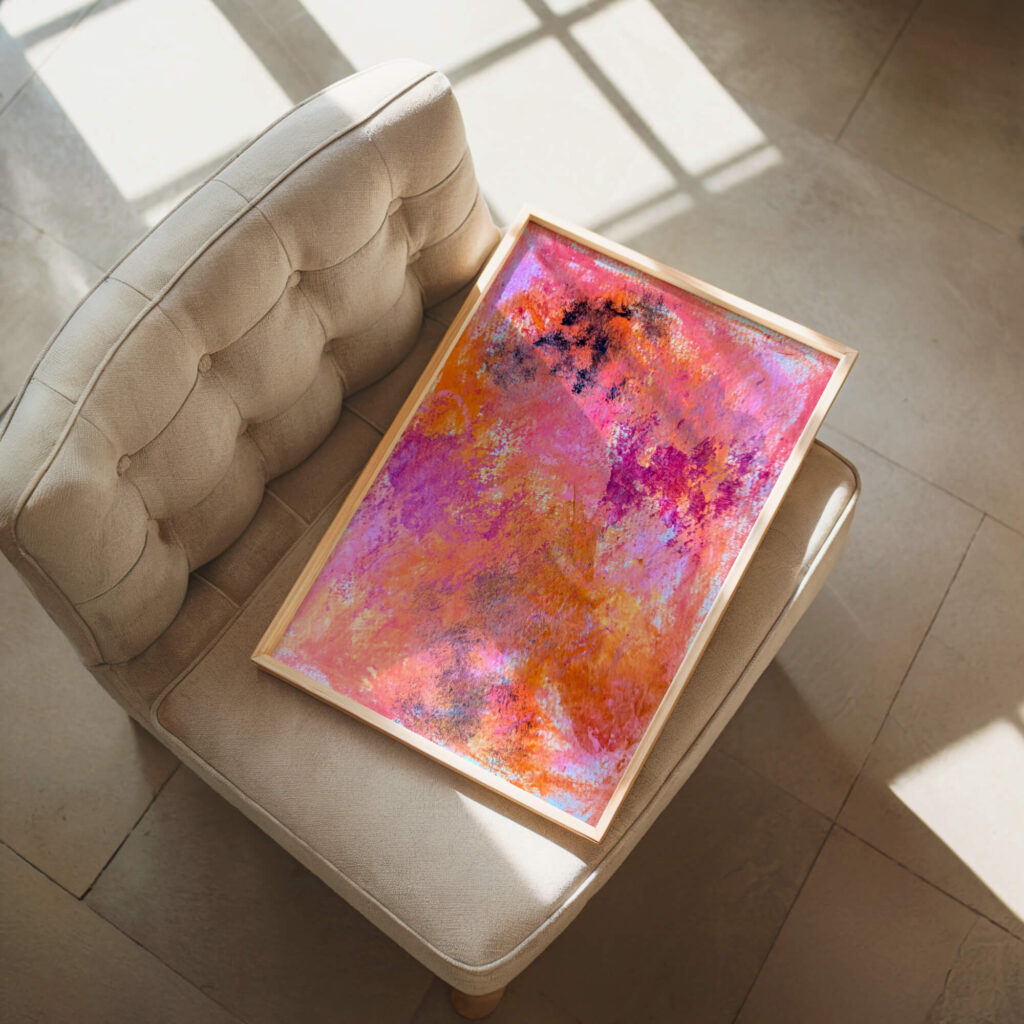
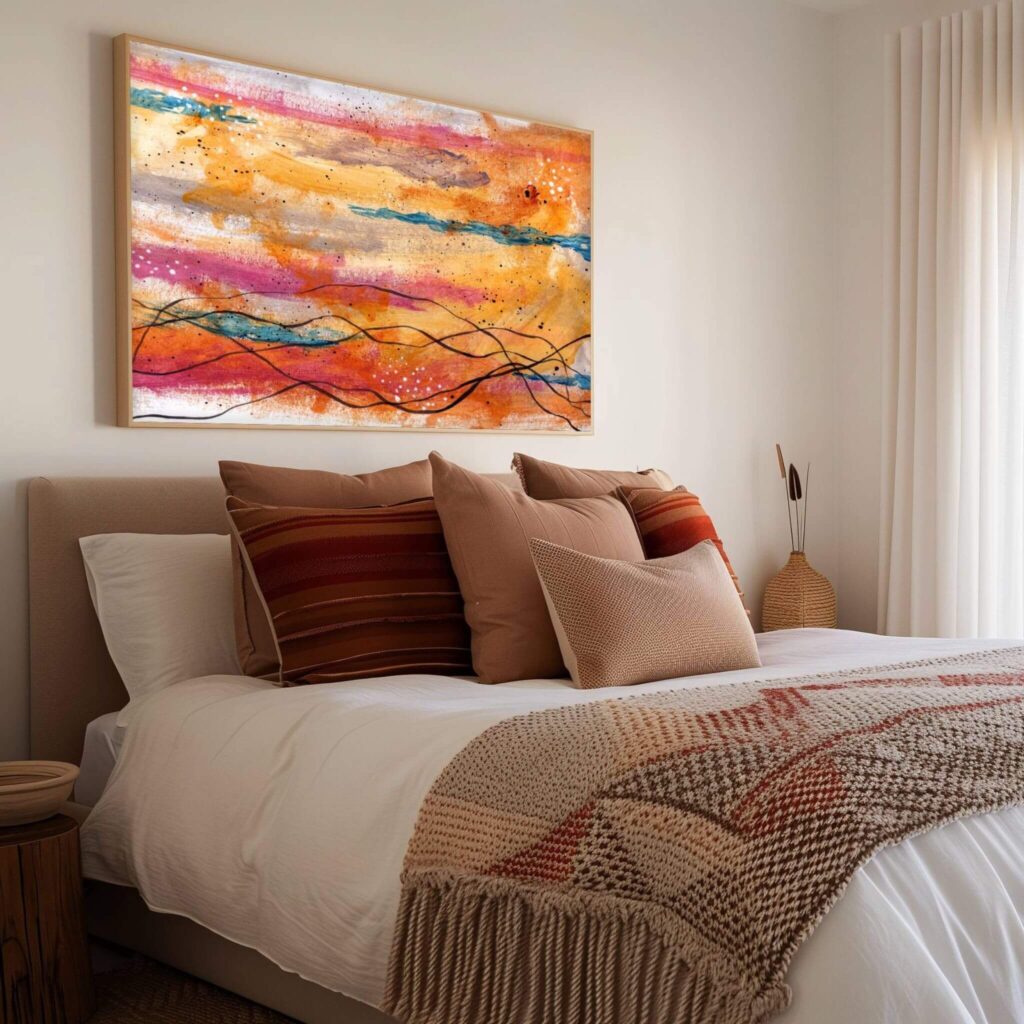
The Power of Personal Narrative in Paint
Let me tell you about Sarah (name changed), a client who came to me after recovering from burnout. She didn’t want motivational quotes or cheerful colours. She wanted honesty. We spoke for two hours. Not about design, but about what she was holding. What she wanted to let go of. The memory of walking alone through a coastal storm.
Her piece ended up being all charcoal greys and quiet teal washes, layered with soft gold that barely revealed itself unless the light hit just right. It now sits above her piano. She says it reminds her that healing is not about being fixed. It’s about being witnessed.
That’s what emotional abstract art does.
It witnesses.
What Is Emotional Abstract Art?
Emotional abstract art is not a style. It’s a language. It uses colour, shape, texture, and negative space to hold unspoken experiences. The kind you don’t always know how to articulate. It isn’t bound by realism or recognisable figures. It doesn’t try to replicate what already exists. It translates what’s internal, grief, clarity, tension, relief, into a visual field of feeling.
And no, it isn’t ‘random brushstrokes anyone could do.’ Emotional abstract work is intentional. Layered. Often built from lived experiences, private moments, or deliberate emotional transmutations. Every inch of the canvas holds weight. Even the white space.
When I create a Soul on Canvas piece for someone, I’m not painting what they want to see. I’m painting what their story needs to hold. The result? Work that doesn’t just decorate, it mirrors.
Emotional Resonance vs. Aesthetic Trend
There’s a difference between a well-designed room and an emotionally intelligent space. The design stops at visual harmony. Emotional presence goes further. It asks:
-
- Does this space reflect who I am, not just what I like?
- Can I exhale here?
- Does the art hold anything I can’t say out loud?
I’ve seen collectors cry when a piece is unwrapped. Not because it’s ‘beautiful’ in the traditional sense. But because they feel recognised. A part of them, translated into form.
No mass-produced print can do that. No trending gallery wall. Only work made with intention.

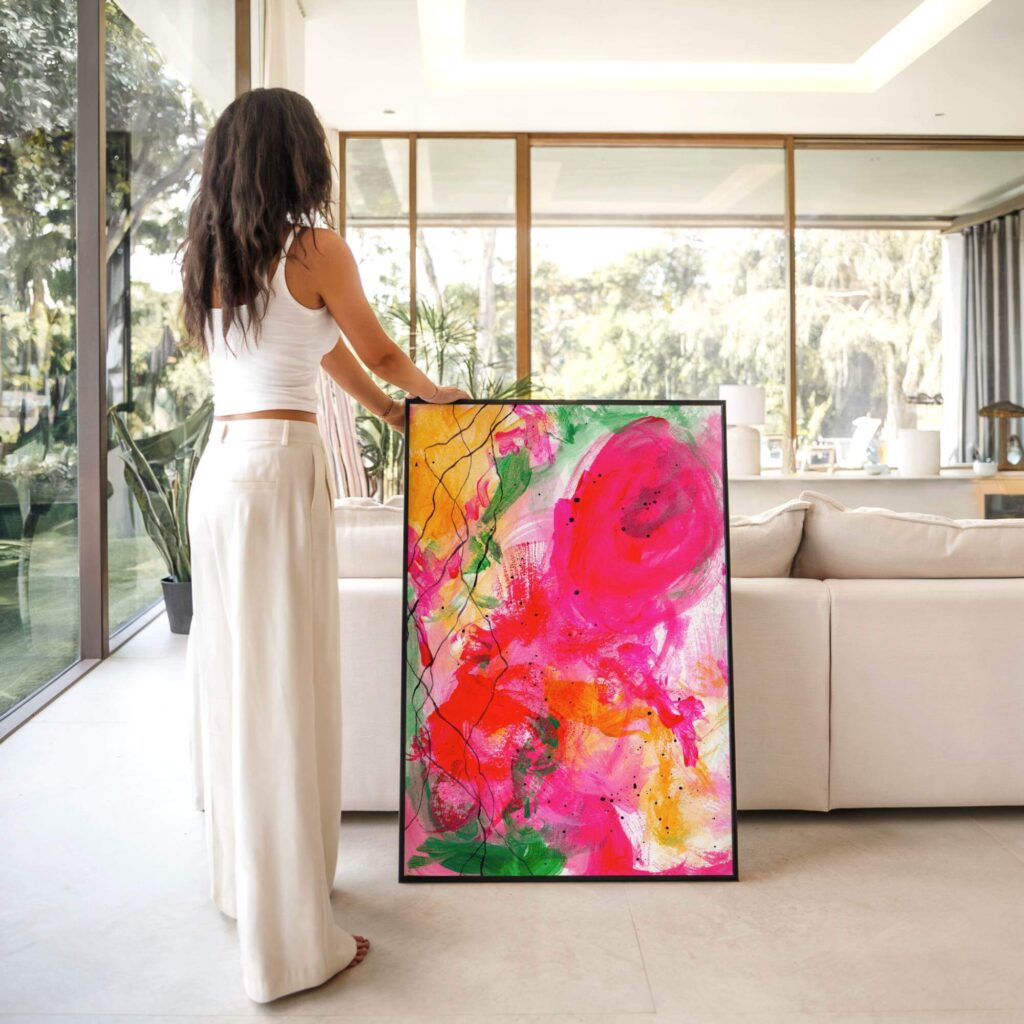
Why Colour Matters More Than Style
Forget style for a moment. What matters is feeling. Colour speaks in frequencies.
-
- Blues and silvers can evoke calm, introspection, melancholy or peace
- Ochres and siennas can bring warmth, memory, and groundedness
- Deep greens often create a sense of safety or emotional restoration
- Bare white space can feel like breath or like emptiness, depending on its use
In Soul on Canvas, colour isn’t decorative. It’s diagnostic. What tones do you need more of in your life? What sensations are missing from your environment? That’s where we begin.
Because when someone walks into your space, they don’t just see your art. They feel it.
What Clients Say
“We thought we were commissioning a piece of art. We ended up creating a space that feels like a sacred pause.”
— Interior Designer, Devon“It’s not loud, but it changes the entire energy of the room. People always stop and breathe when they walk in.”
— Executive Client, London“It reminds me to be present every time I see it. It’s become part of my daily rhythm.”
— Private Collector, Edinburgh
Texture Is a Language, Too
People underestimate texture. But in emotional abstract art, it’s everything.
Smooth washes can create serenity. Raw, built-up areas can represent tension, struggle, or a deep story. In my work, I often layer with palette knives, soft brushes, and hands, sometimes even using fabric or sand to create subtle interruptions in the surface.
It’s not about effect. It’s about truth. The textures of a piece speak to the complexities of the human condition. Not everything is smooth. And it shouldn’t be.
Collectors often say they run their hands over the surface of a print. Even though it’s flat, the memory of the original texture still lives in the work. That’s emotional residue. You can’t fake it.
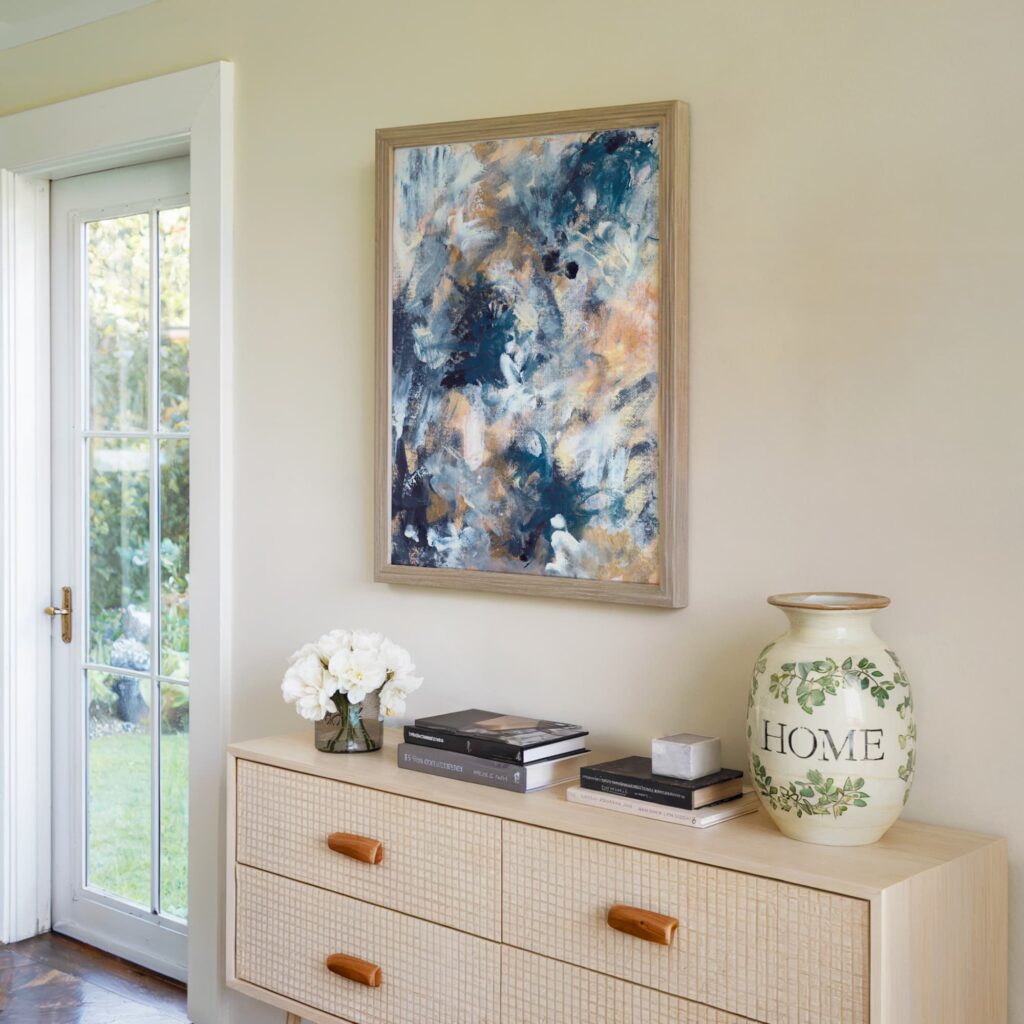
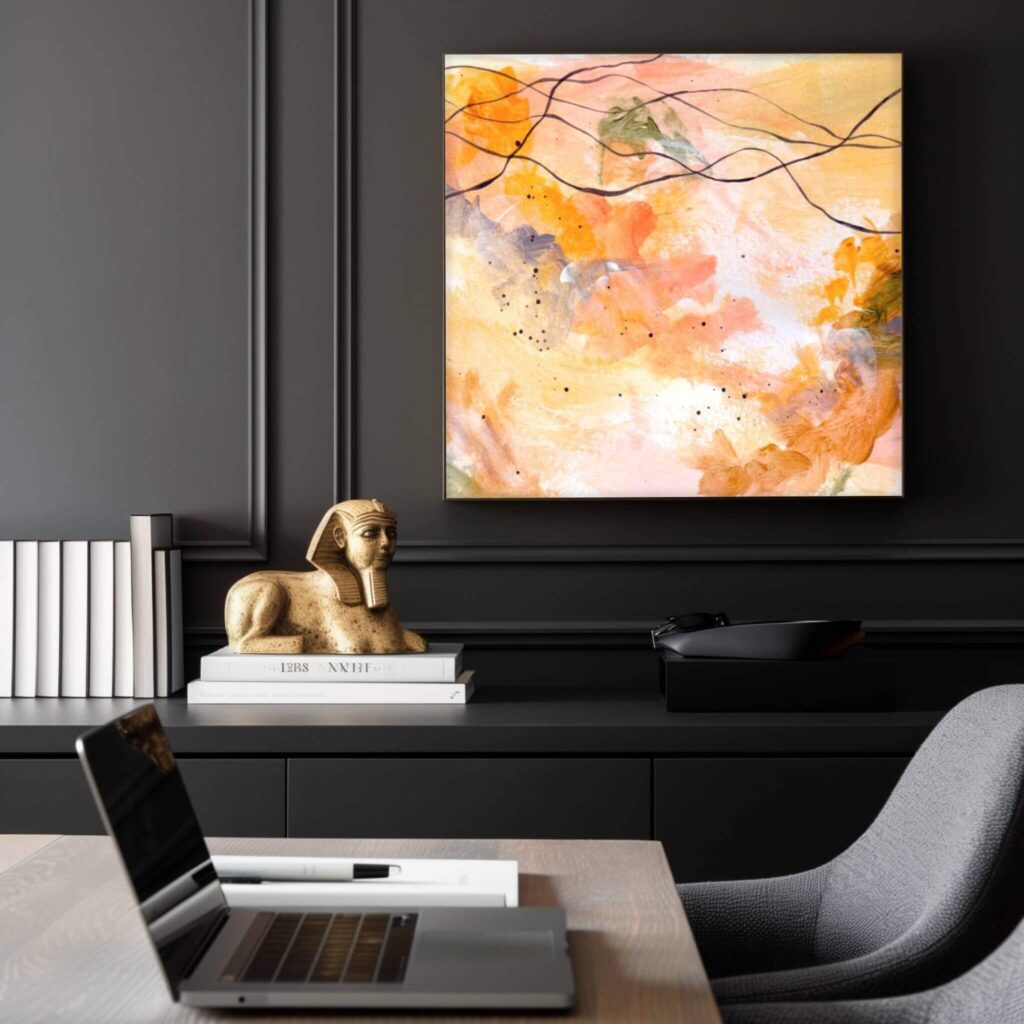
Emotional Curation: Choosing Art That Meets You
If you’re curating your home, don’t start with Pinterest boards. Start with how you want to feel.
Then ask:
-
- What colours hold that emotion for me?
- What textures or movements speak to it?
- What kind of visual weight feels right,light and open, or dense and protective?
Choosing emotional abstract art isn’t about matching your sofa. It’s about meeting your moment.
I’ve had collectors choose work during divorce, healing from loss, or stepping into a new identity. The art becomes a landmark in their home,not just of style, but of personal truth.
Soul on Canvas: Emotional Commissioning for Private Spaces
This is where it gets personal. Soul on Canvas isn’t a commercial service. It’s a private experience. One piece. One story. Your emotional landscape, is translated.
When you commission from this offer, you’re not getting a product. You’re being witnessed in colour. The piece becomes part of your story. It’s not made to impress. It’s made to hold.
You can choose:
-
- 125 x 90 cm (£7,500) or 180 x 125 cm (£10,500) for personal use
- £14,500 / £17,000 for commercial use (based on size)
Each commission is printed on museum-quality canvas. Accompanied by a short private reflection text based on the emotion behind the work.
To commission your piece or learn more, visit Soul on Canvas.
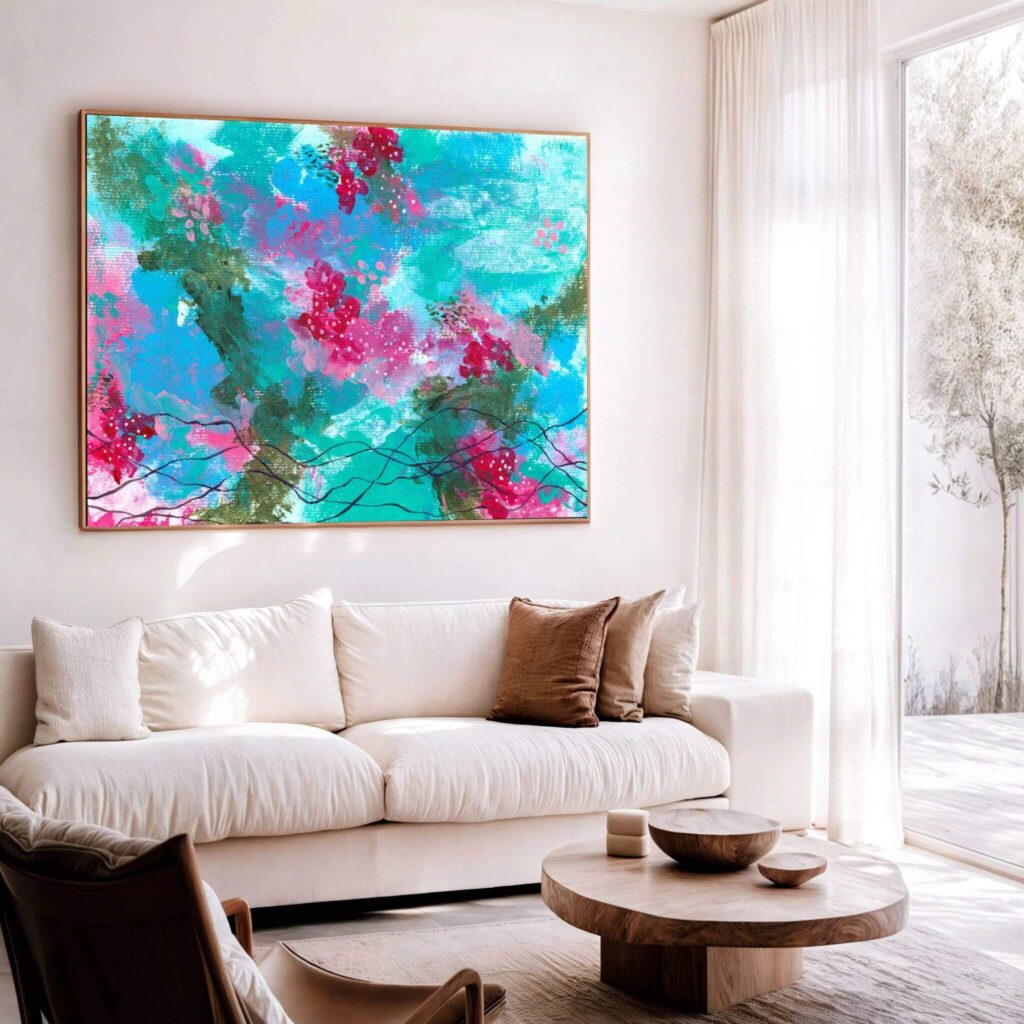
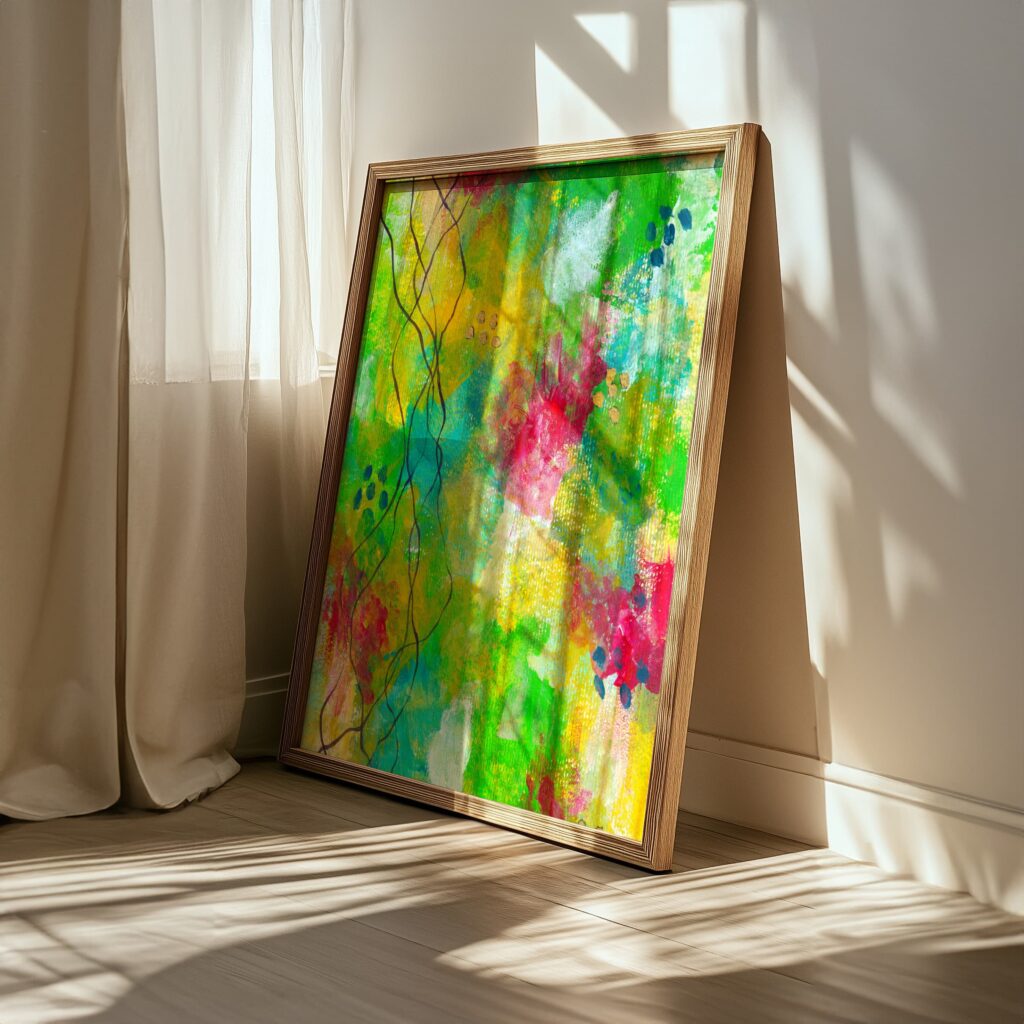
Beyond Beauty: What Emotionally Intelligent Collectors Are Actually Buying
They’re not collecting objects. They’re collecting reflections.
For emotionally intelligent collectors, the artwork isn’t about trend or approval. It’s about resonance. It’s about something that holds what they’re living throug, without explaining, without performing, without demanding attention.
I don’t always know where each piece ends up. I don’t need to. What matters is how it lands. And time after time, I’ve heard the same thing:
“I didn’t expect it to feel like this.”
“It’s not what I thought I wanted, but it’s exactly what I needed.”
“It lets me breathe.”
The work lives quietly in the background. But the presence is strong.
This is what emotionally intelligent art does. It doesn’t ask for validation. It offers space.
Placements: What I Know, Not What I Imagine
I won’t pretend I know exactly where each piece lives. That’s not the kind of relationship I have with my work once it’s sold. But I do know that they’ve gone to people who were seeking something more than beautiful.
One collector told me they bought a piece after a long period of personal upheaval. It wasn’t planned. It wasn’t even rational. But the work mirrored what they were carrying.
That’s enough for me.
I don’t know whether it’s hanging in their bedroom or their hallway or their private studio. I only know it felt like the right time to bring it into their world.
That’s the emotional placement that matters.
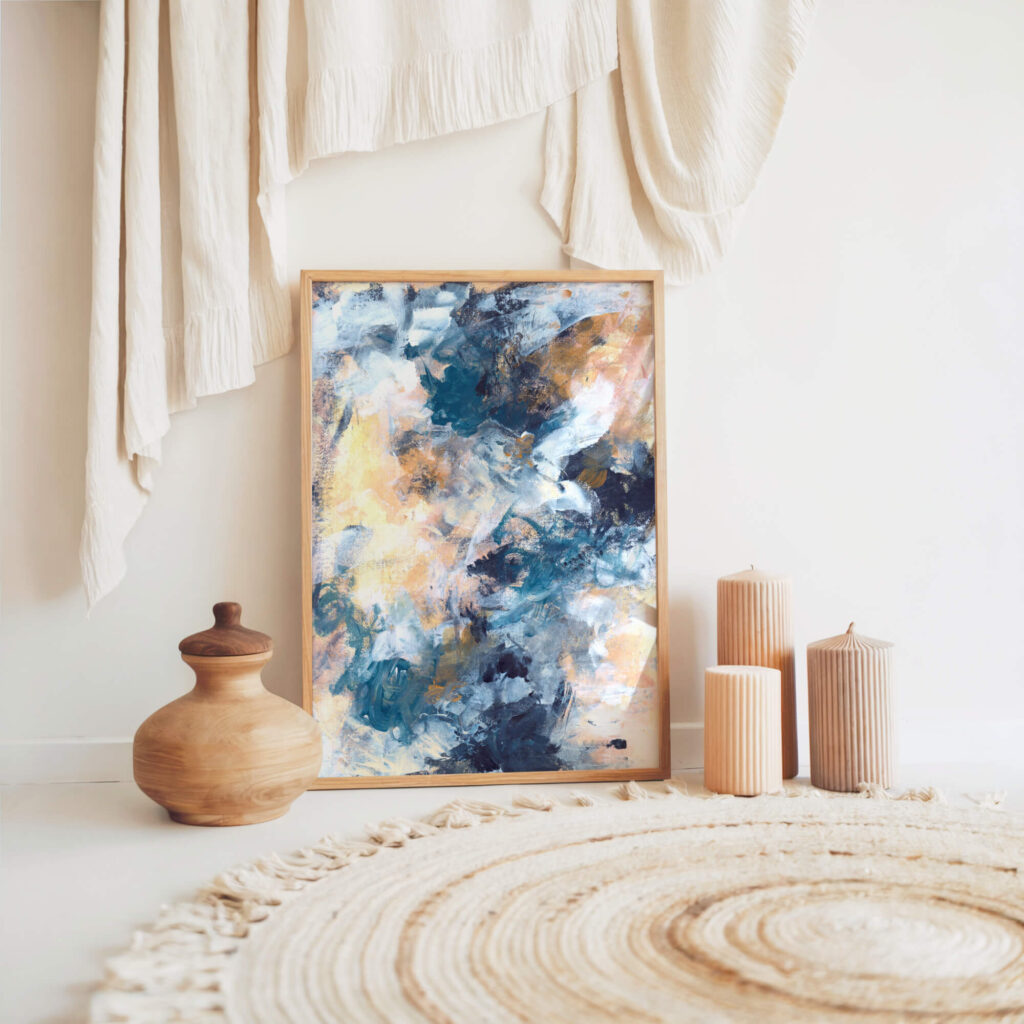
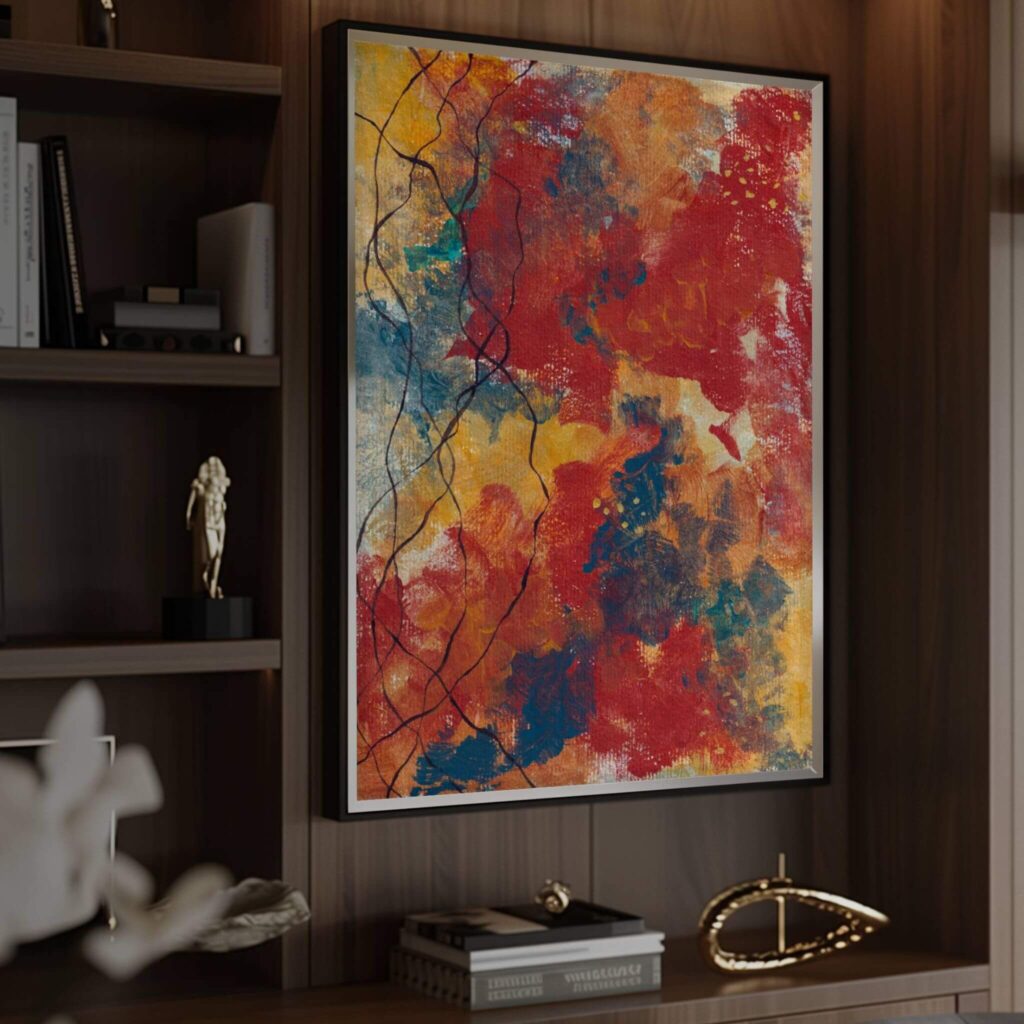
Soul on Canvas: A Mirror for What Matters
Soul on Canvas wasn’t created for decoration. It was built for private transitions, the moments we don’t usually honour out loud. A shift. A reckoning. A letting go. A return.
It’s not promotional. It’s not fast.
Each piece is created through a private process rooted in presence, emotional texture, and personal narrative. Some are meant to feel like breath. Others like boundaries. But all are built to hold something real.
You don’t have to explain it. You don’t have to share it. You just have to know it’s yours.
How Abstract Art Changes the Energy in Executive Spaces
In high-performance environments, clarity is currency. But clarity doesn’t come from noise. It comes from stillness.
That’s why emotionally intelligent abstract art belongs in executive offices, founder spaces, law firms, private clinics, and leadership environments. Not to perform, but to hold the opposite energy of everything else in the room.
These spaces are often saturated with decision-making, pressure, leadership expectations, and constant cognitive processing. The role of emotionally intelligent art in that context isn’t aesthetic, it’s neurological.
It becomes a regulating force.
A visual breath.
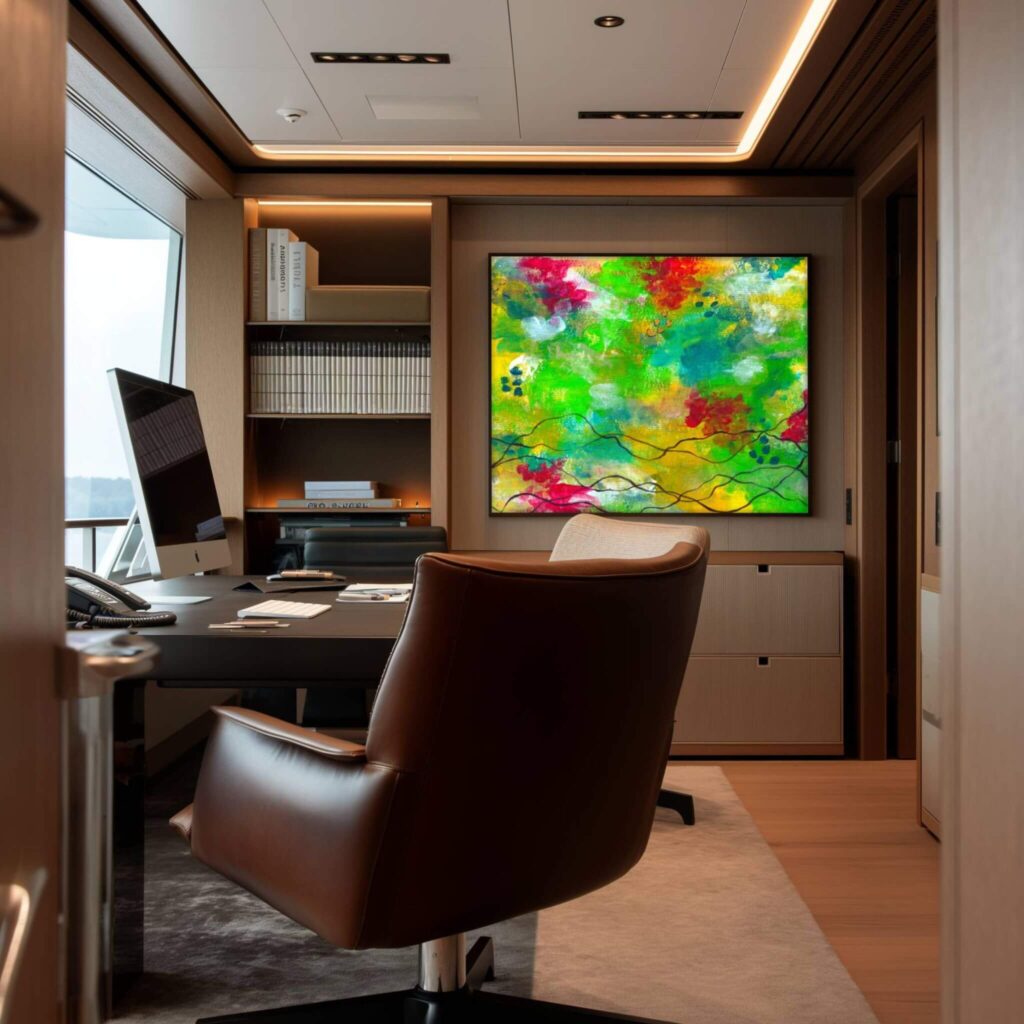

What Happens When You Introduce Art Like This into a Demanding Space?
-
- Cognitive decompression: abstract art that holds stillness provides a visual landing point that’s not asking to be solved. This allows the brain to exit constant interpretation and re-enter a state of presence.
- Emotional permission: high-stakes environments often prioritise logic over feeling. Art that speaks in emotion, not explanation, offers a rare kind of permission. A quiet “you don’t have to be in control here.”
- Energy balance: when everything in a space is sharp, optimised, and forward-moving, emotionally intelligent work adds the counterweight. Texture softens edge. Space invites breath. Subtle colour restores coherence.
- Cognitive decompression: abstract art that holds stillness provides a visual landing point that’s not asking to be solved. This allows the brain to exit constant interpretation and re-enter a state of presence.
This isn’t about making a workspace “nice.” It’s about making it human again.
Who Is This Really For?
The founders who don’t talk about their burnout.
The surgeons who never leave their heads.
The consultants who operate in sixteen tabs at once.
The therapist who holds everyone else’s grief.
These are the people who need anchoring the most.
And that’s what this kind of art offers, not surface beauty, but private recalibration.
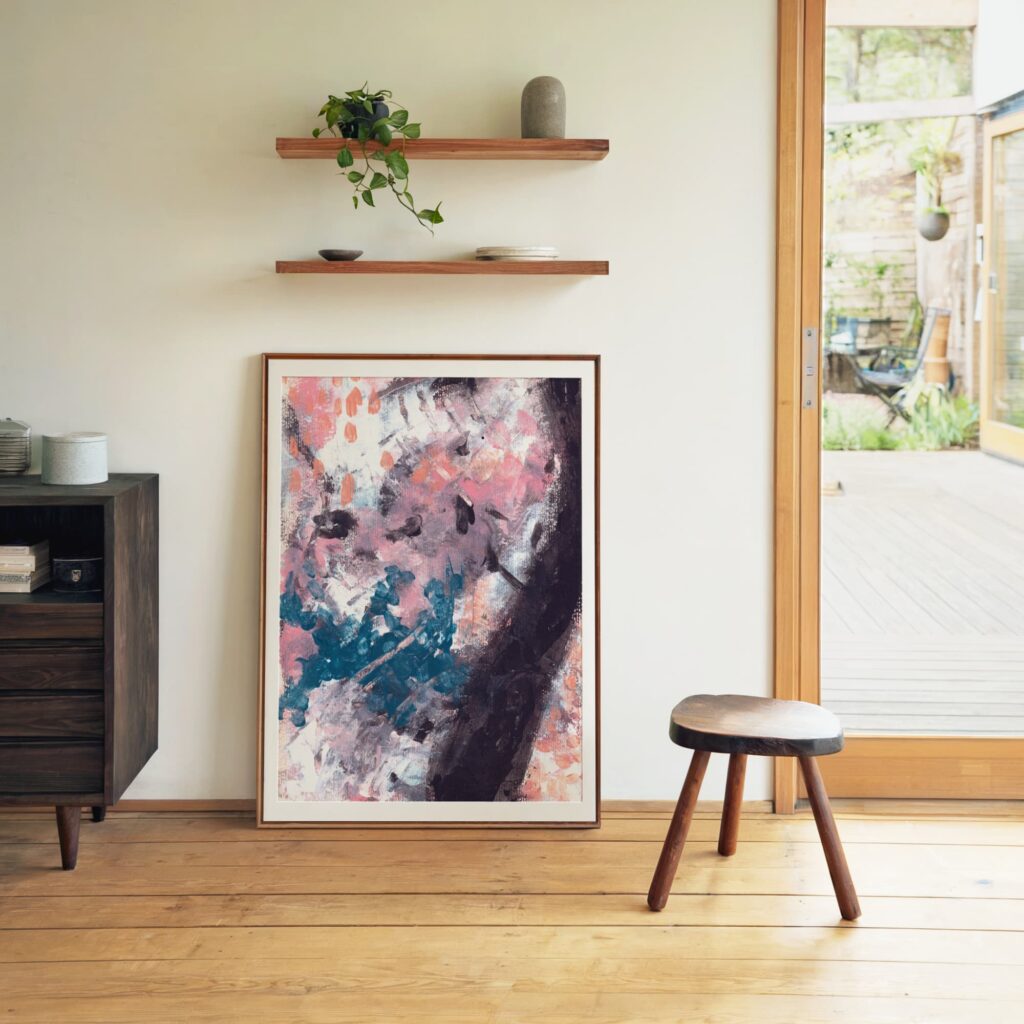
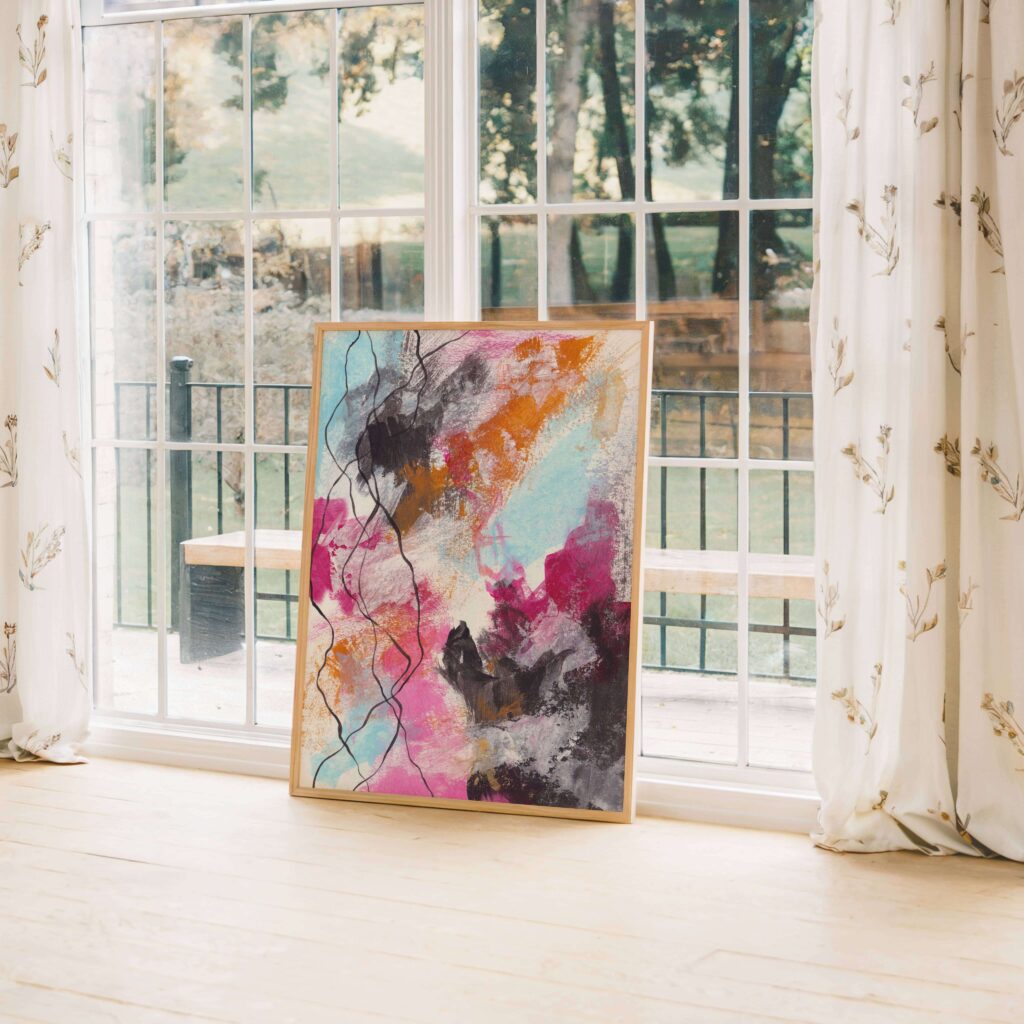
You Don’t Have to Know Why You Need It
Not every collector can name what they’re looking for. Some come in through intuition. Through a piece that stops them mid-scroll or mid-room. Through a phrase in my emails that lands deeper than expected.
They don’t need art for their office. But they need something that helps them stay in their office. With more breath. More clarity. Less fragmentation.
And that’s the difference.
Art as a Ritual Anchor for Change or Recovery
Not everyone talks about what they’re carrying. But you can usually feel it when they walk into a room.
The people drawn to emotionally intelligent abstract work are often the ones in a shift. Sometimes it’s loud, divorce, death, burnout, betrayal. Sometimes it’s quieter, a reorientation, a letting go, the decision to no longer abandon themselves.
This is where emotionally resonant art stops being “art.” It becomes a ritual.
It marks something.
It offers structure to something internal that doesn’t have language yet. And for collectors who don’t want to talk it through, who don’t want therapy on the wall, that’s exactly the point.
The art doesn’t say what happened.
It holds what’s still happening.
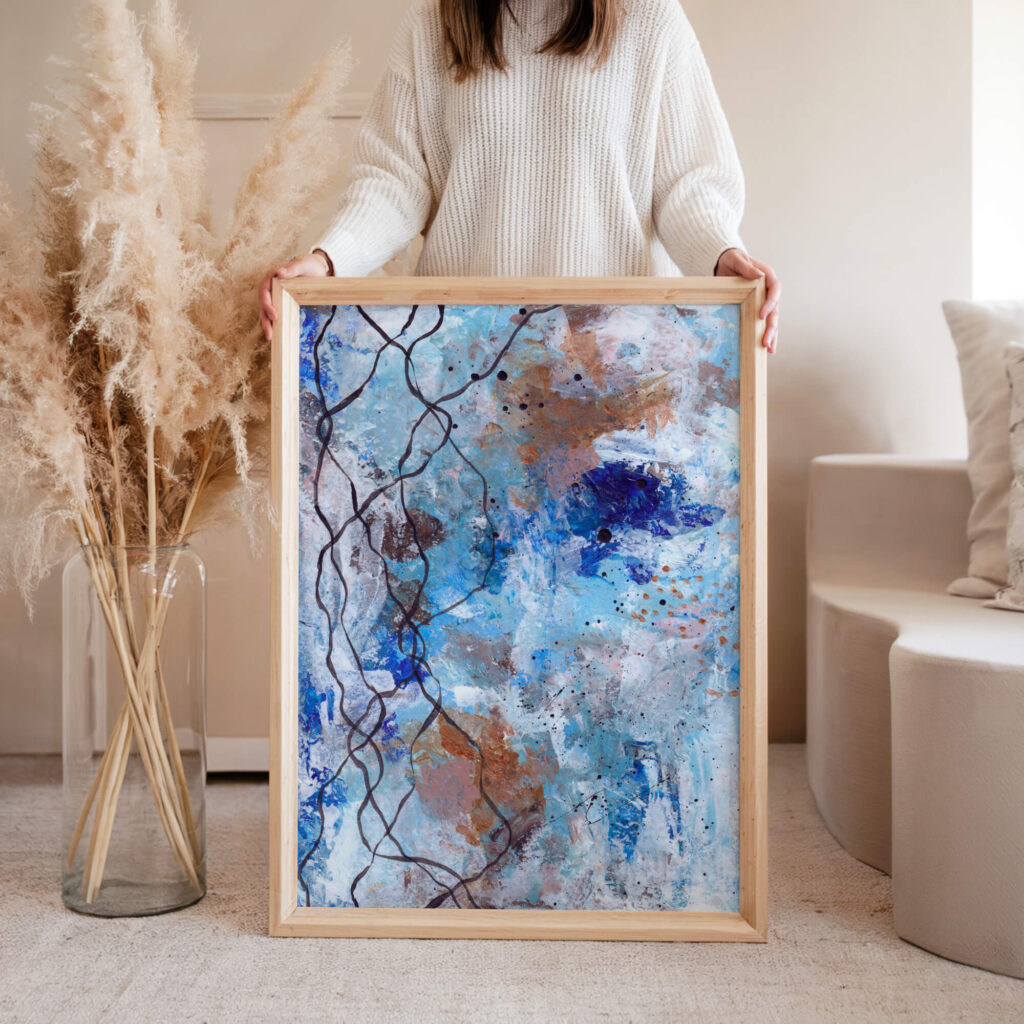
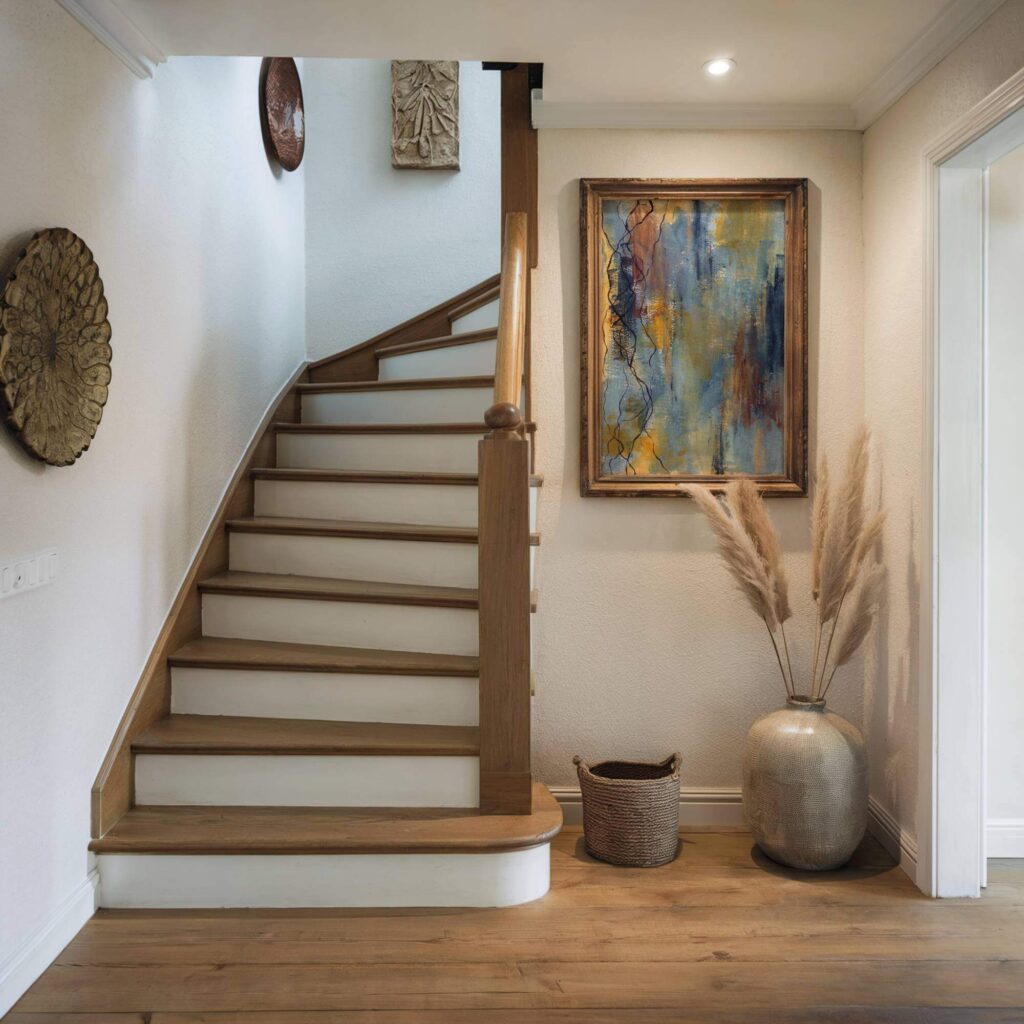
Why Emotional Transitions Need Anchors
Rituals have always existed to help us cross thresholds. But in modern life, most transitions are flattened. We move house, bury grief under deadlines, skip past heartbreak, try to rebrand our way out of identity loss.
Emotionally intelligent abstract art creates a visual boundary around the transition. It becomes a private ritual, no ceremony needed.
-
- It holds presence when everything else feels uncertain
- It becomes a personal site of grounding when no one else understands
- It reminds the collector who they were, and who they’re becoming, without needing to define either
- It holds presence when everything else feels uncertain
You don’t need a life crisis to invite art like this into your space. But if you are moving through something, the work becomes more than visual. It becomes a form of quiet companionship.
Designed for Moments That Don’t Have Language Yet
Not everyone will commission art for a transition. Some will choose a piece quietly, in a season where words feel heavy.
But that’s exactly where offers like Soul on Canvas are rooted, not in trend, not in mass-visibility, but in deep private seasons of becoming.
For those navigating:
-
- Major life shifts (career, identity, location, purpose)
- Emotional recovery from burnout, loss, or betrayal
- Emergence from survival mode into presence
- The unnameable in-between
- Major life shifts (career, identity, location, purpose)
These pieces are not created to impress others.
They’re created to help you stay in your own story when you’d otherwise disappear in someone else’s.
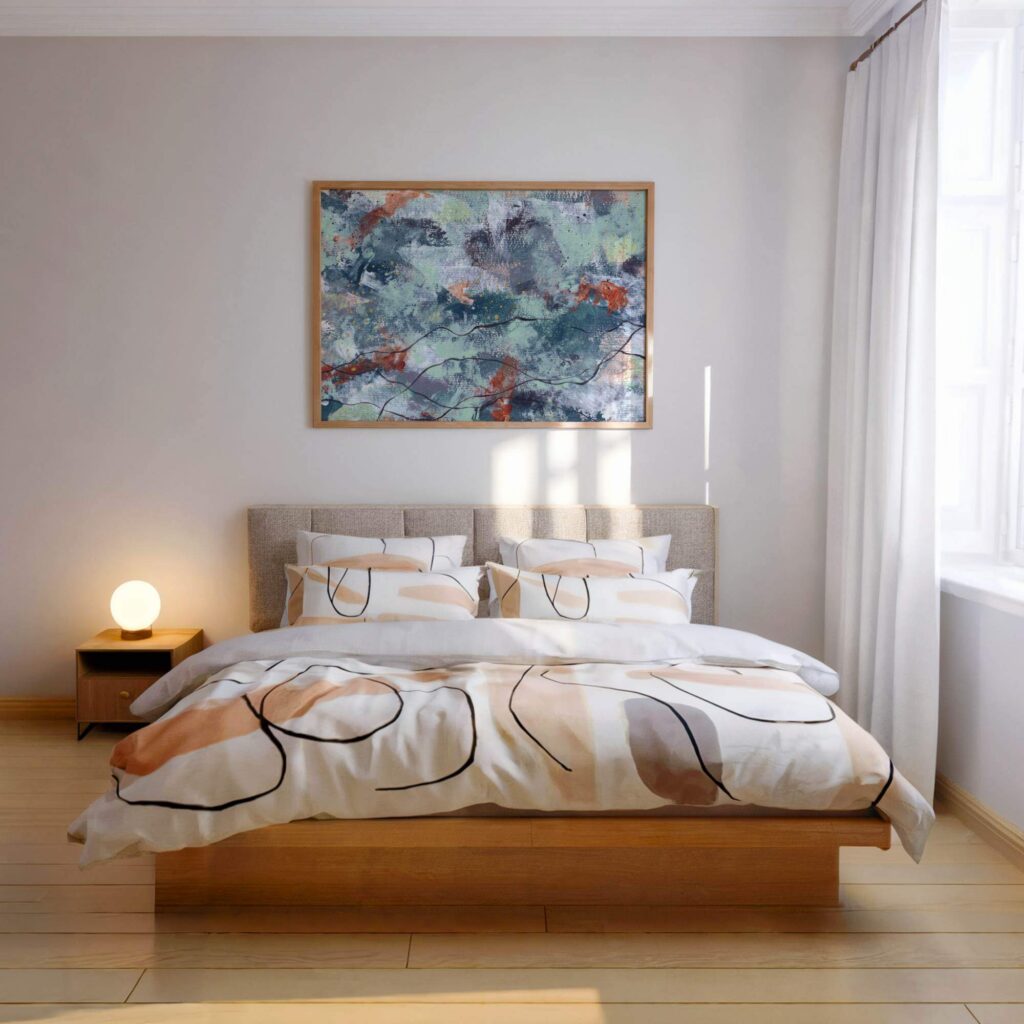
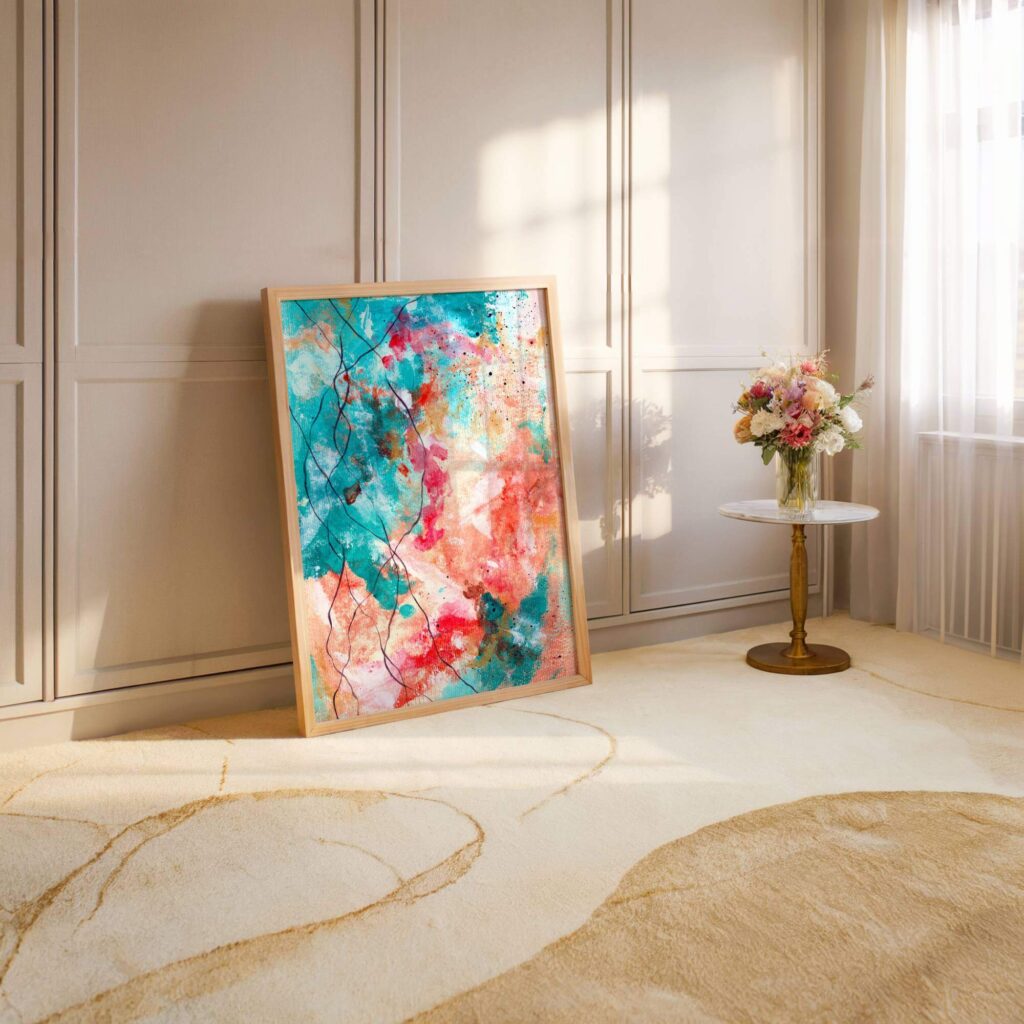
Why This Matters in the Wider Landscape of Art
Art has always mirrored the collective psyche, from Renaissance glory to modern minimalism, from propaganda to protest. But something deeper is shifting now. In the world of high-end art and design, there’s a quiet rebellion happening. Not against technique or tradition, but against disconnection.
We’re no longer just asking, is this beautiful?
We’re asking, does this hold anything real?
Emotionally intelligent abstract art exists outside trend cycles. It doesn’t rely on recognisable figures or performative meaning. Instead, it meets the moment, not the market. And that’s precisely why it matters.
The Fatigue of Perfection and the Return to Truth
Perfection used to sell. Immaculate galleries, intellectual jargon, sleek catalogues of work that looked impressive but said nothing. But collectors today, the ones who are awake, emotionally attuned, and honest with themselves, are fatigued by all of it.
They don’t want to be sold a myth. They want to be held in something true.
They’re looking for:
-
- Work that resonates, not just visually, but energetically
- Art that isn’t trying to prove anything, only to witness what already is
- Pieces that bring humanity back into the home, not just design
- Work that resonates, not just visually, but energetically
This shift isn’t loud. You won’t see it shouted across press releases or trending on social. But in private rooms, behind closed doors, the question is being asked more often:
What do I actually want to feel in this space?
And the answer is rarely more decoration.
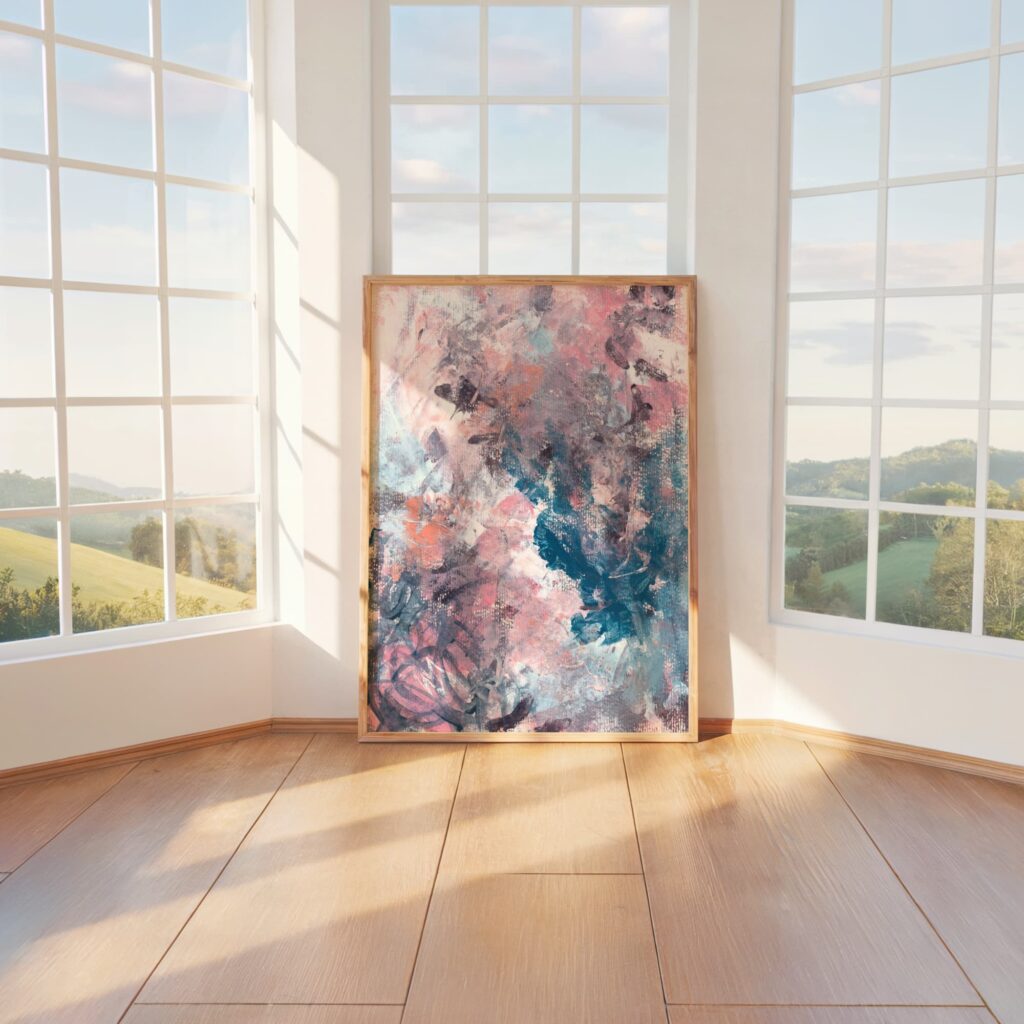
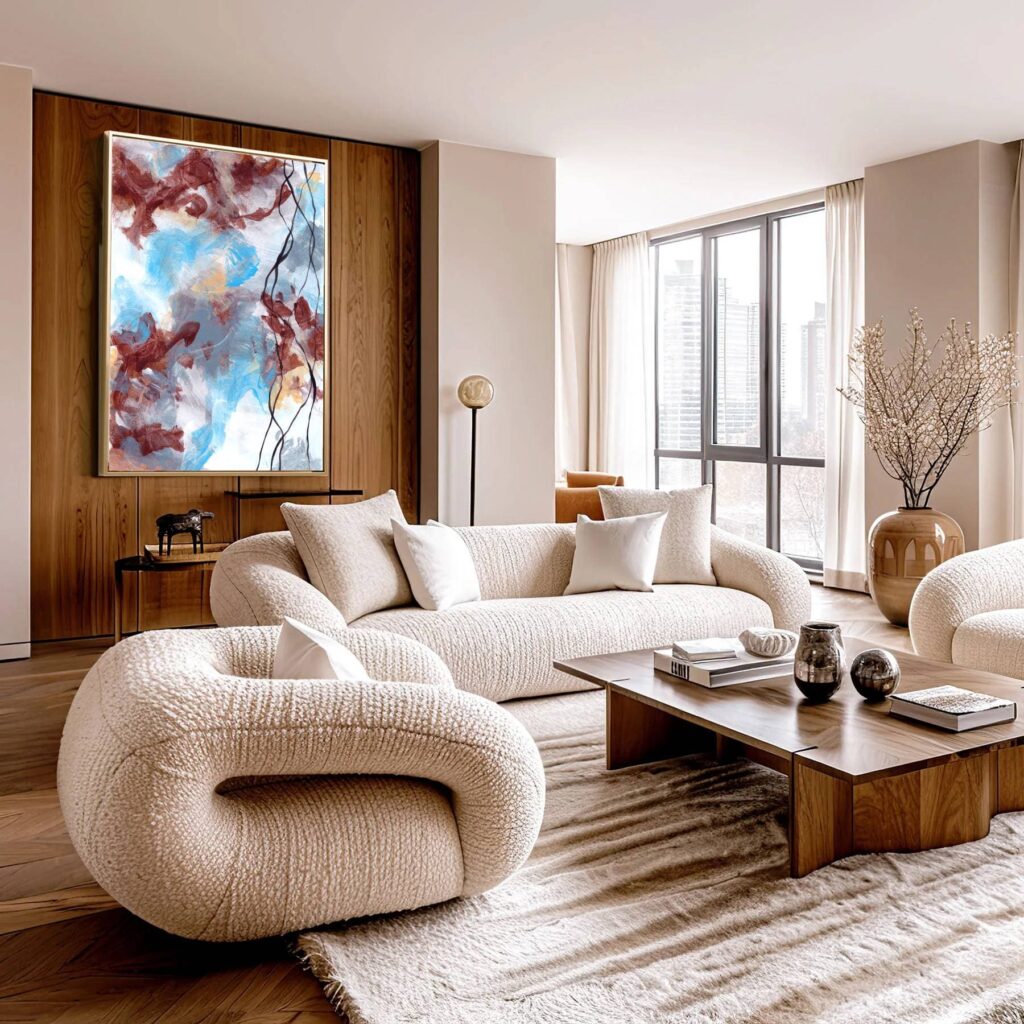
My Offerings
Whether you’re a private collector, a wellness-focused brand, or a designer sourcing for a high-calibre project, I offer art that resonates deeply and subtly.
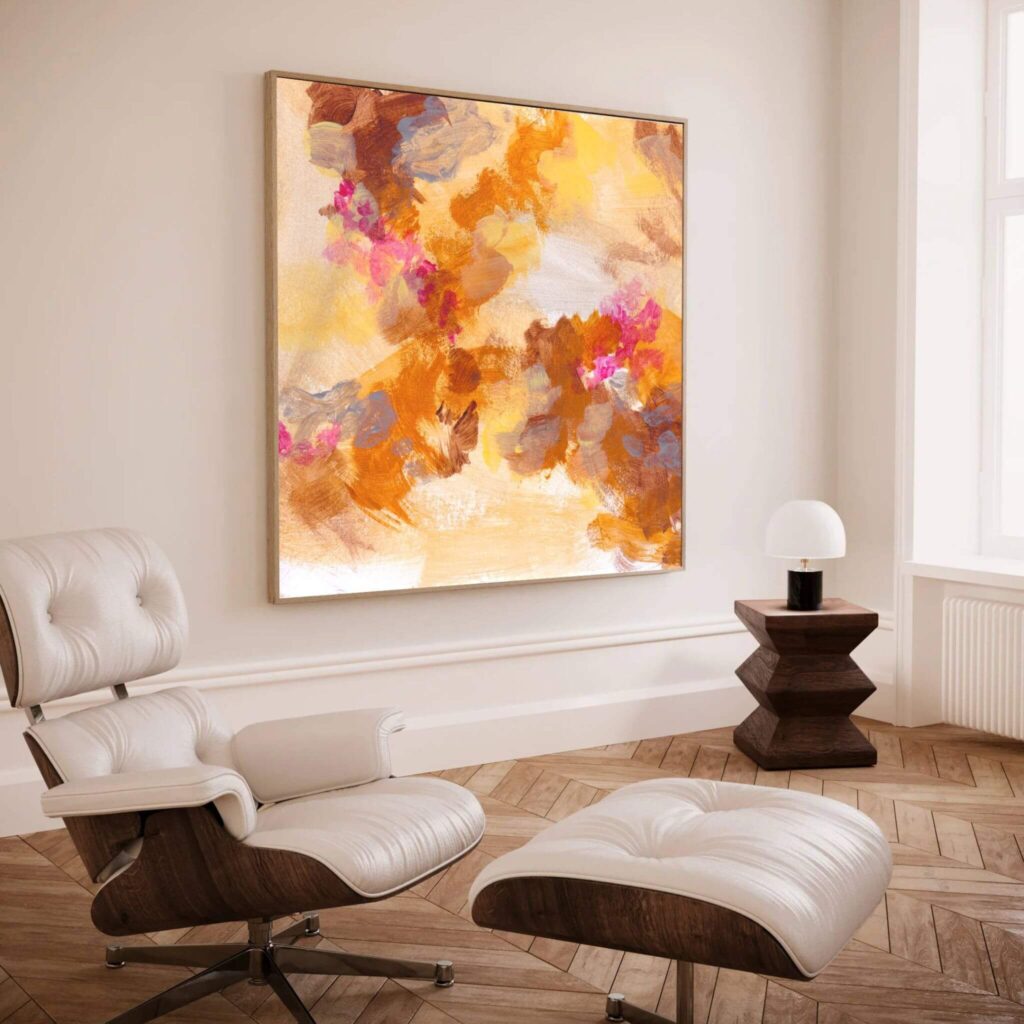
Collector's Vault
Canvas prints from the archive, made with emotional resonance and sustainable materials for spaces seeking depth.

Capsule Commission
Created privately, one at a time, through stillness and reflection. Limited spaces each season to preserve depth and intimacy.
The Last 10
Ultra-limited, hand-embellished editions. No more than ten will ever exist. Made to ground, steady, and hold presence at the highest tier.
The Rise of Emotionally Intelligent Collectors
There’s a new wave of collectors emerging. They’re not always seasoned buyers. Some are first-timers. Some are founders, creatives, healers, or leaders in high-pressure fields. They aren’t just curating beauty. They’re curating emotional infrastructure.
These collectors are:
-
- Choosing fewer pieces, but with more depth
- Prioritising emotional relevance over market value
- Treating their spaces as extensions of their own nervous system
- Choosing fewer pieces, but with more depth
They don’t need ten paintings. They need the right one.
Something that allows them to feel safe. Or witnessed. Or simply… returned to themselves.
This isn’t sentimentality. It’s discernment.
And emotionally intelligent abstract art is becoming a cornerstone of that movement.
The Role of the Artist: Witness, Not Performer
In this landscape, the role of the artist changes, too. It’s not about spectacle or visibility. It’s about resonance.
My job isn’t to entertain, impress, or even explain. My job is to hold the frequency of truth, and let the work speak its own quiet language.
I create from that space. And collectors who are ready for it, they feel it. Often before they even realise why.
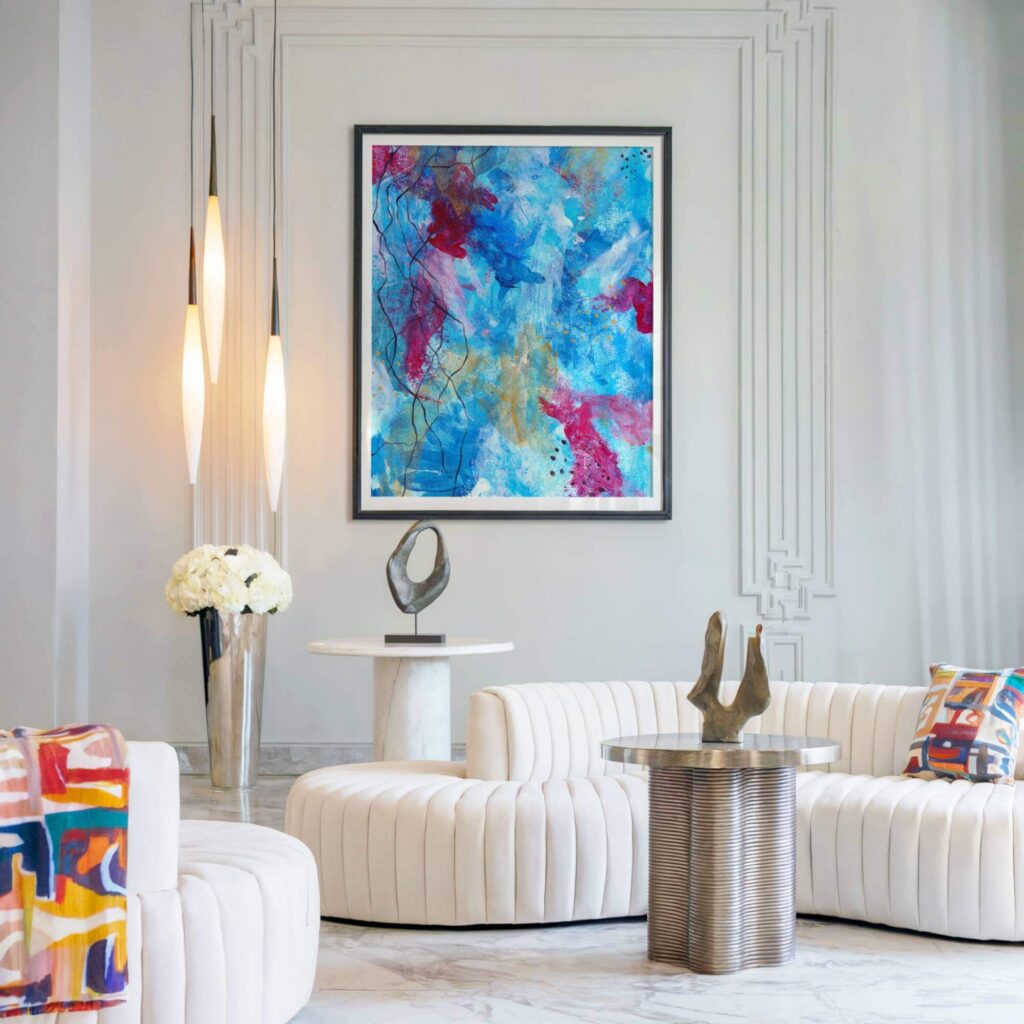
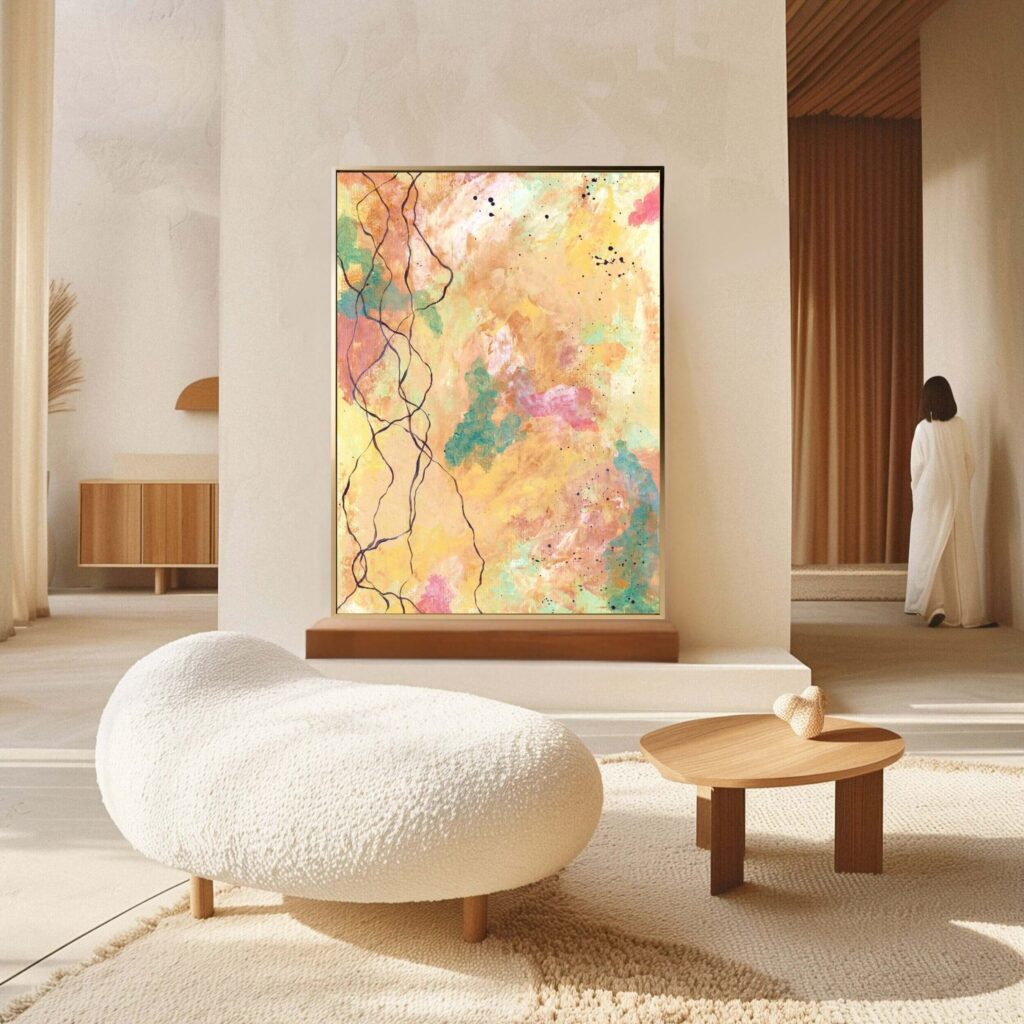
Conclusion: For Those Who Know Without Needing to Explain
Not everyone needs art like this.
But for those moving through something, visible or not, emotionally intelligent abstract art becomes more than presence. It becomes anchoring. Reflection. A private declaration of “I’m still here.”
It doesn’t demand attention. But it offers it. And sometimes, that’s all we need.
If you’re looking for a piece that meets your story rather than explains it, you’re welcome to explore Soul on Canvas. Quietly. On your own terms.
